Search Thermo Fisher Scientific
Invitrogen
CD95 (APO-1/Fas) Monoclonal Antibody (15A7), PerCP-eFluor™ 710, eBioscience™
图: 1 / 21
CD95 (APO-1/Fas) Antibody (46-0951-82) in Flow
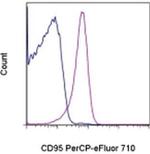
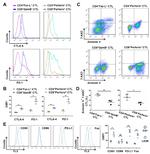


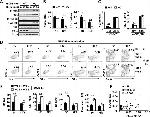


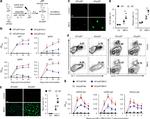

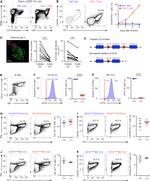
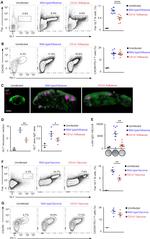
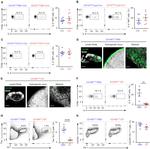
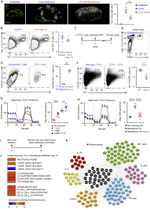
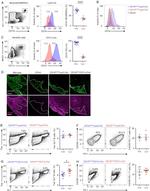
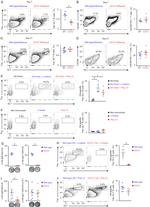
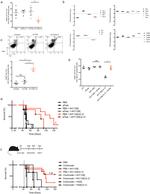
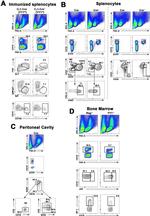
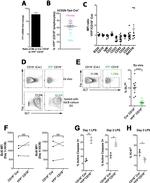
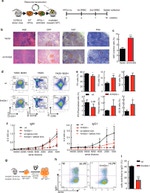
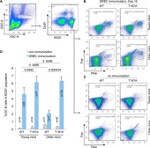

产品信息
46-0951-82
种属反应
已发表种属
宿主/亚型
分类
类型
克隆号
偶联物
激发/发射光谱
形式
浓度
纯化类型
保存液
内含物
保存条件
运输条件
RRID
产品详细信息
Description: The 15A7 monoclonal antibody reacts with mouse CD95 (Fas, Apo-1), a 40-50 kDa member of the TNFR superfamily. CD95 is expressed by a broad range of hematopoietic and non-hematopoietic cells including monocytes, neutrophils, activated lymphocytes and fibroblasts. Interaction of CD95 on mature lymphocytes with its ligand (FasL) induces apoptosis and is thought to be important in peripheral tolerance. 15A7 reacts with mouse CD95 in BALB/c strain and a bit more weakly in C57Bl/6 strain. 15A7 does not induce apoptosis of Fas-expressing cells.
Applications Reported: This 15A7 antibody has been reported for use in flow cytometric analysis.
Applications Tested: This 15A7 antibody has been tested by flow cytometric analysis of mouse thymocytes. This can be used at less than or equal to 1 µg per test. A test is defined as the amount (µg) of antibody that will stain a cell sample in a final volume of 100 µL. Cell number should be determined empirically but can range from 10^5 to 10^8 cells/test. It is recommended that the antibody be carefully titrated for optimal performance in the assay of interest.
PerCP-eFluor® 710 emits at 710 nm and is excited with the blue laser (488 nm); it can be used in place of PerCP-Cyanine5.5. We recommend using a 710/50 bandpass filter, however, the 695/40 bandpass filter is an acceptable alternative. Please make sure that your instrument is capable of detecting this fluorochrome.
Fixation: Samples can be stored in IC Fixation Buffer (Product # 00-822-49) (100 µL cell sample + 100 µL IC Fixation Buffer) or 1-step Fix/Lyse Solution (Product # 00-5333-54) for up to 3 days in the dark at 4°C with minimal impact on brightness and FRET efficiency/compensation. Some generalizations regarding fluorophore performance after fixation can be made, but clone specific performance should be determined empirically.
Excitation: 488 nm; Emission: 710 nm; Laser: Blue Laser.
Filtration: 0.2 µm post-manufacturing filtered.
靶标信息
FAS (Fas, CD95, APO-1) is a 46 kDa transmembrane glycoprotein that functions as a cell death receptor of the TNFR (tumor necrosis factor receptor) superfamily. FAS also exists in a soluble form that weight approximately 26kDa. Stimulation of FAS results in aggregation of its intracellular FAS-associated death domains (FADD), formation of the death-inducing signaling complex (DISC) and activation of caspases. The auto-proteolytic processing of the caspases in the complex trigger a downstream cascade that leads to apoptosis. FAS has been shown to activate NF-kappaB, MAPK3/ERK1, MAPK8/JNK, and is involved in transducing the proliferating signals in normal diploid fibroblast and T cells. At least eight alternatively spliced transcript variants encoding seven distinct isoforms have been described. The isoforms lacking the transmembrane domain may negatively regulate the apoptosis mediated by the full-length isoform. The Fas/Fas ligand system has been shown to play a role in a number of human diseases such as AIDS, hepatitis and cancer. It is also assumed that induction of apoptosis through FAS ligand pathway is predominantly involved in anti-viral immune responses.
仅用于科研。不用于诊断过程。未经明确授权不得转售。
How to use the Panel Builder
Watch the video to learn how to use the Invitrogen Flow Cytometry Panel Builder to build your next flow cytometry panel in 5 easy steps.
生物信息学
蛋白别名: Apo-1 antigen; Apo-1 Fas; Apo1 antigen; Apoptosis-mediating surface antigen FAS; CD95; Fas (TNF receptor superfamily member); Fas antigen; FASLG receptor; lymphoproliferation; OTTHUMP00000020045; OTTHUMP00000020046; OTTHUMP00000020051; OTTHUMP00000059646; Tumor necrosis factor receptor superfamily member 6
基因别名: AI196731; APO1; APT1; CD95; Fas; lpr; TNFR6; Tnfrsf6
UniProt ID: (Mouse) P25446
Entrez Gene ID: (Mouse) 14102




